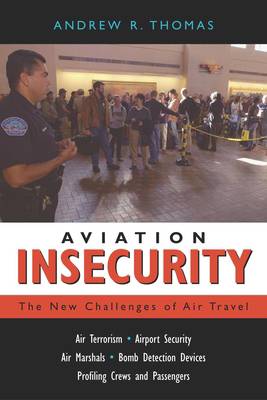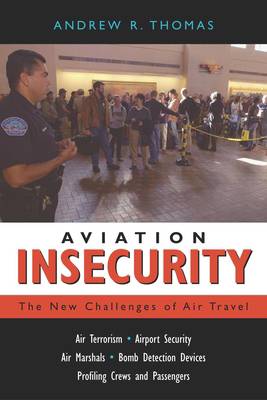
- Afhalen na 1 uur in een winkel met voorraad
- Gratis thuislevering in België vanaf € 30
- Ruim aanbod met 7 miljoen producten
- Afhalen na 1 uur in een winkel met voorraad
- Gratis thuislevering in België vanaf € 30
- Ruim aanbod met 7 miljoen producten
Zoeken
€ 37,45
+ 74 punten
Omschrijving
In this probing critique of aviation security since 9/11, Andrew R. Thomas, a globally recognized aviation security expert, examines the recent overhaul of the national aviation security system.
Despite the complete federal takeover of aviation security in November 2001, Thomas notes many continuing problems, including: millions of passenger bags that are still not screened or matched; the unresolved problem of air rage and unruly passenger behavior; the "forgotten chasm" of air cargo, which remains largely unchecked due to inadequate resources; and lax standards, the hiring of high-risk employees, and the failure to secure critical areas in many of our nation's airports.
Thomas also considers many of the proposed solutions to these vulnerabilities: biometrics, profiling, air marshals, bomb-detection devices, and smart technology that links reservations systems to private and government databases. How practical are these proposals? Will they work? What will they cost? How much time will be needed to implement any or all of them? In light of the restructuring of airline security, what new roles will be played by the airline industry, government, airports, and the Transportation Security Administration? Thomas's thorough analysis and command of all the facts create an enlightening overview of the airline security dilemma and its numerous formidable challenges.
Finally, he considers the future, outlining a strategic approach for government and industry to meet new and existing threats while continuing to serve the public in an efficient manner.
Despite the complete federal takeover of aviation security in November 2001, Thomas notes many continuing problems, including: millions of passenger bags that are still not screened or matched; the unresolved problem of air rage and unruly passenger behavior; the "forgotten chasm" of air cargo, which remains largely unchecked due to inadequate resources; and lax standards, the hiring of high-risk employees, and the failure to secure critical areas in many of our nation's airports.
Thomas also considers many of the proposed solutions to these vulnerabilities: biometrics, profiling, air marshals, bomb-detection devices, and smart technology that links reservations systems to private and government databases. How practical are these proposals? Will they work? What will they cost? How much time will be needed to implement any or all of them? In light of the restructuring of airline security, what new roles will be played by the airline industry, government, airports, and the Transportation Security Administration? Thomas's thorough analysis and command of all the facts create an enlightening overview of the airline security dilemma and its numerous formidable challenges.
Finally, he considers the future, outlining a strategic approach for government and industry to meet new and existing threats while continuing to serve the public in an efficient manner.
Specificaties
Betrokkenen
- Auteur(s):
- Uitgeverij:
Inhoud
- Aantal bladzijden:
- 260
- Taal:
- Engels
Eigenschappen
- Productcode (EAN):
- 9781591020745
- Verschijningsdatum:
- 1/05/2003
- Uitvoering:
- Paperback
- Formaat:
- Trade paperback (VS)
- Afmetingen:
- 157 mm x 228 mm
- Gewicht:
- 371 g

Alleen bij Standaard Boekhandel
+ 74 punten op je klantenkaart van Standaard Boekhandel
Beoordelingen
We publiceren alleen reviews die voldoen aan de voorwaarden voor reviews. Bekijk onze voorwaarden voor reviews.








